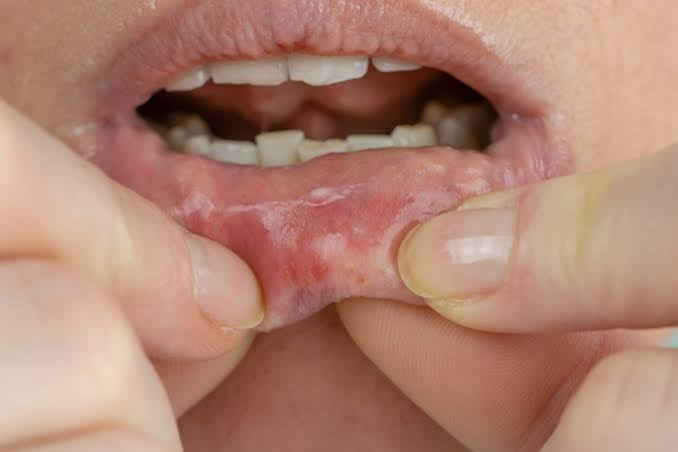Description of Scrofoloso Tenons
Description of Scrofoloso Tenons
6.Arthritis deformans
Is an affiliction of the joints. It may in some cases begin as an acute disease. It does in most cases become chronic. Progressive changes in the various tissues of the joints, viz. Synovial mambrane, cartilages, ligaments and bones pathogonomonic symptoms. As complications and sequelae, the heart, glands, liver, spleen, are involved they play their part in the production of sensations and modalities.
7.Stomatitis
An acute inflammation of the mucous membrane of the mouth. We meet three varieties of this affilictions. First, the follicular, second the ulcerative or noma, third the gangrenous or cancrum oris. Catarrhal stomatitis shows a mild form of inflammation of the mouth, without any ulceration, presenting a very red and raw surface with soreness in the mouth. Mercurial stomatitis is with sponginess of the gums, profuse flow of the saliva, metallic taste in the mouth and ulcerations. Aphthous stomatitis is characterised by the presence of aphthae Or numerous small, yellowish -white spots breaking down into shallow ulcers with raised margins upon the mucous membrane of the cheeks, lips and tongue and may extend upto the pharynx. They usually are dependent upon constitutional causes.
Mycotic stomatitis
Presents small and round patches in the mucous membrane of the mouth and pharynx, of milk white or greyish white appearance, though at first adherent, can be readily scraped off later, leaving small bleeding ulcerations. They collapse together involving a greater area. In ulcerative stomatitis lesions begin in the folds of the mucous membrane between the gums and the cheeks, associate with swelling and sponginess of the gums, which bleed easily, and break down and form ulcer, which is also known as cancrumoris Or noma suggested by a small diptherial patch of dark or bluish red colour surrounded by general inflammation of the mouth. It extends rapidly and becomes brownish in appearance and indurated in nature, with the formation of one or more blebs in it, which soon rupture, resulting in ulceration and rapid destruction of the tissue, ending fatally with a very short time. The breath is horribly offensive and profound prostration from early stage. The Constitutional symptoms are very grave, but the fever is moderate and pain is absent. A typical typhoid state usually brings in the fatal end rapidly.
8.Asthma
Is characterized by paroxysms of dyspnoea of expiratory type, continuing for a variable length of time, and terminating in the expectoration of thick glairy mucous. When severe, there are signs of defective areation,. cyanosis, with sweating , feeble pulse and cold extremities. Coughing is difficult, very light and dry at first, and then more violent with expectoration of the distinctive sputum. Physical signs include loud wheezing respiration, the inspiration is short and the expiratory movement much prolonged, percussion may be hyperresonant. On Ausculation, there are sonorous rales, which become moister in the end.
9.Laryngitis
The acute catarrhal form shows swelling of the larynx with the local colds with feeling of soreness, dryness and tickling in the larynx, occasionally there may be severe burning pain. Coryza with dry cough, which becomes somewhat moist later with scanty but clear expectoration. Hoarsenses Or complete loss of voice, which may be accompanied by slight fever.
10.Dyspnoea and Aphonia
Stridulous breathing. The mucous is bright red, dense and semi opaque. Symptoms come on with rapid Onset. The disease reaches its acme in about 3 or 4 days and is apt to terminate fatally.
11.Cough
Mechanism consists in the closure of glottis, followed by a forcible ejection of air by reasoning of contraction of the muscles of respiration. Among the essential factors, irritation of the respiratory mucous membrane. The presence of mucous or a foreign body in the respiratory passages. There is a tickling sensation, located in any portion of the respiratory tract and a peculiar stuffiness or suppression refferred to the chest.
12.Hysteria
Moist cough has a free expectoration of the pathological secretions of the air passsages. A moist cough should not be suppressed, as it rids the air passages of its secretions in fully developed bronchitis. Tuberculosis, pneumonia, bronchorrhoea, bronchiectasis, emphysema,. and the terminal stages of Asthma. A constant cough is usually of pulmonary origin and occurs in conjection with bronchitis, phthisis, pleurisy and pulmonary consolidation, where severe coughing for long period indicates bronchiectasis, emphysema and haemoptysis.
13.Diarrhoea
Means persistent purging or evacuation of faces, which are watery and sometimes acrid. The stools consist of fluid faeces, mucus, serum, undigested food and even of blood and pus. Pain, flatulence and tinismus are the association symptoms.
Dr. Mahalakshmi Raghunath









Comments
Post a Comment